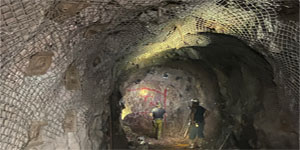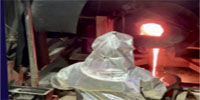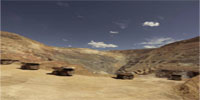
Continued High Grade Silver Assays At The Bayhorse Silver Mine
VANCOUVER – Bayhorse Silver Inc reported additional high grade silver assays at the Bayhorse Silver Mine, Oregon. A recent diamond drill hole conducted in the Goldilocks Zone, directed from west to east, targeted the newly confirmed thrust of the Goldilocks structure. The drill hole intersected 2.75 meters (9ft) of strong silver mineralization, of which 0.92 meters (3 ft) graded 1,771.58 g/t Ag (51.75 oz/t), 0.92 meters graded 104.869g/t ( 3.05 oz/t) and 0.92 meters graded 1,546.46 g/t (45.2 oz/t) for a weighted average grade over the intersection of 1,140.68 g/t (33.34 oz/t).
Bayhorse CEO, Graeme O’Neill, said, “Everyone is seeing substantial increases in energy costs. Most of the Bayhorse Mine and Mill is electrified, and we are relatively insulated from the rapidly rising energy costs. However, all our underground and surface equipment runs on diesel, as well deliveries through our supply chain. With diesel prices being a large component of operating costs, we are reviewing opportunities to reduce these costs.”
O’Neill further comments, “In addition to the Silver and Copper content in our stockpiled concentrate at the Bayhorse Mill, it contains nearly 12% Antimony content. The Company is currently determining whether added value can be achieved from separating the Antimony from the concentrate as an added value product. Antimony is considered a critical metal for the U.S.”
The Company is not basing any decision to produce on a feasibility study of mineral reserves demonstrating economic and technical viability and advises there is an increased uncertainty and specific economic and technical risk of failure with any production decision. These risks include, but are not limited to, (i) a drop in price of commodities produced, namely silver, copper, lead and zinc, from the pricing used to make a production decision; (ii) failure of grades of the produced material to fall within the parameters used to make the production decision; (iii) an increase in mining costs due to changes within the mine during development and mining procedures; and (iv) metallurgical recovery changes that cannot be anticipated at the time of production.






